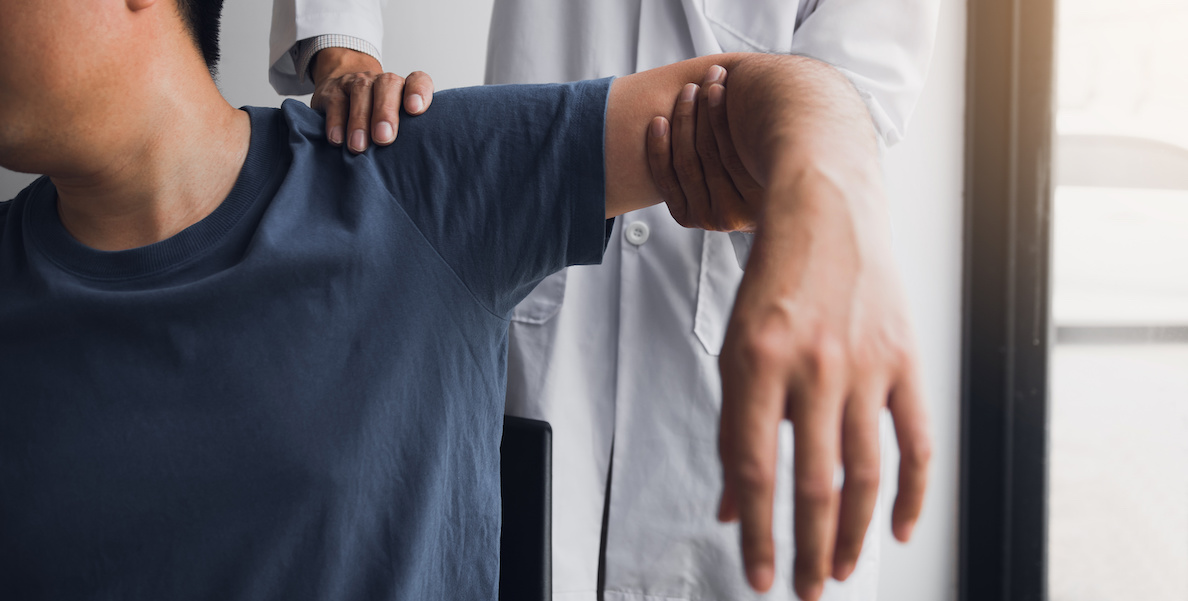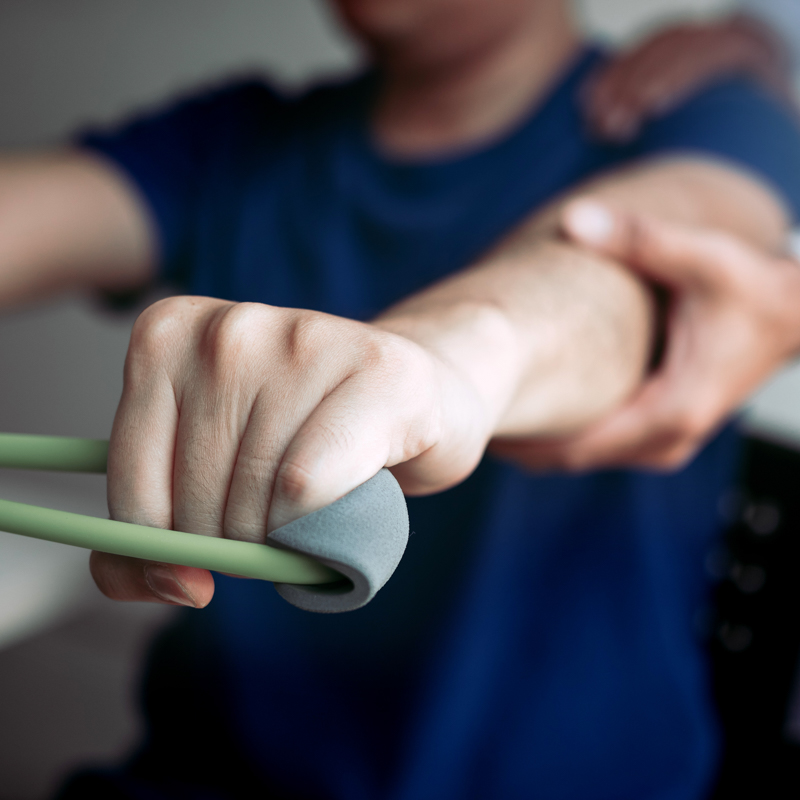If your shoulder hurts, the cause is probably one of these common problems.
It’s hard to swing a golf club, blow-dry your hair or even drive if you have chronic shoulder pain. What might be the trouble, and what should you do to relieve it? There are three common shoulder problems that bring people to an orthopedic specialist.
1. Rotator Cuff Disease and Impingement
What is it?
The rotator cuff is a set of muscles and tendons that connect the shoulder ball and socket to move the upper arm and stabilize the shoulder joint. In impingement, the tip of the shoulder blade, called the acromion, can pinch the tendons of the rotator cuff. “Repetitive impingement by the acromion can cause rotator cuff disease and pain,” said Dr. Eric Bowman, an orthopedic surgeon with Vanderbilt Orthopaedics. Rotator cuff disease refers to injury to the rotator cuff either suddenly or over time; it can include bursitis or tendinitis up to partial thickness or larger tears.
What does it feel like?
You may feel pain in your shoulder when reaching overhead or behind you (for example, reaching for the car’s seat belt, or fastening a bra). The pain is usually in the front and side of the shoulder and spreads down the upper arm. You may feel weakness when lifting the arm to the front or side. The pain can vary, but generally it’s sharp pain, usually related to activity. Pain at night is another common complaint, Bowman said.
Who is most at risk?
Repetitive overhead motions can lead to these problems. Vanderbilt Orthopaedics surgeons see this in athletes who serve tennis balls or pitch baseballs, and in “weekend warriors” who do physical activity with repetitive arm movements — for example, painting a room or doing yard work.
What’s the treatment?
It will depend on the individual, but generally, impingement syndrome and rotator cuff disease can improve with physical therapy, oral anti-inflammatory medicines, or steroid injections around the rotator cuff. In more advanced cases, treatment may include arthroscopic surgical repair of the rotator cuff.
2. Arthritis
What is it?
Arthritis is a degenerative condition in which cartilage in a joint wears away. Eventually it may erode to the point where a bone is rubbing directly against another bone. It causes pain and stiffness around the joint. The most typical form of arthritis in the shoulder is osteoarthritis due to wear and tear.
What does it feel like?
Arthritis pain is generally a dull ache at rest and sharp with motion. It may cause a grinding sound (called “crepitus”) when you move your arm. The pain may be in both the front and back of the shoulder. People with shoulder arthritis will feel stiffness and have difficulty or pain with repetitive motions.
Who is most at risk?
The likelihood of developing arthritis increases with age. People who have had previous shoulder surgery or trauma to the shoulder are also vulnerable. To some extent, Bowman said, arthritis has a genetic component, so if your parents have arthritic joints you may be at risk.
What’s the treatment?
Arthritis in the shoulder is first treated with a stretching program, oral anti-inflammatory medication and/or steroid injections into the joint. There are different types of shoulder replacements depending on your situation. It is recommended that you discuss your options with a specialist.
3. Frozen shoulder
What is it?
Frozen shoulder, also called adhesive capsulitis, is when the shoulder gradually gets stiffer and more immobile, but without arthritis present.
What does it feel like?
A frozen shoulder will cause constant pain, even when you’re resting it. The pain may be throughout the shoulder (front, back and side). It will gradually become stiffer. People with frozen shoulder are often unable to raise their arms higher than shoulder level, or behind their back. Pain can vary, but it is usually dull at rest and sharp with motion, with constant pain early on. Over time, the pain gradually resolves first, followed by the stiffness.
Who is most at risk?
Frozen shoulder is more common in women than in men. Those at higher risk include people with diabetes or thyroid disease and those in their 40s to 60s. It may be associated with trauma but can occur spontaneously.
What’s the treatment?
Most cases of frozen shoulder resolve on their own but may take more than a year in severe instances. Treatment typically involves oral anti-inflammatory medication, physical therapy and/or a steroid injection into the joint. In some cases, manipulating the shoulder under anesthesia — where a doctor moves the arm while the patient is asleep — can speed the recovery of motion. Occasionally a surgical arthroscopic capsular release can break up scar tissue in the joint.
Keeping shoulders pain-free
The best way to avoid painful shoulder problems is to keep the joint flexible and build strength in the muscles around the shoulder (the rotator cuff, deltoid and trapezius muscles).
A regular workout program including exercises such as rows and internal and external rotation of the shoulder is good maintenance, Bowman said. These conditioning exercises can help. A personal trainer or physical therapist (or even some quality videos found via Google or YouTube) can be a good place to start and will help you perform the exercises with the proper form.

Need relief from joint pain?
If you are dealing with an injury, preparing for surgery or coping with chronic pain, Vanderbilt Orthopaedics offers a wide range of care. Our specialists work with you from evaluation and “prehab” through physical therapy and, if needed, surgery. We’ll help you get back to doing the things you love, pain-free.




